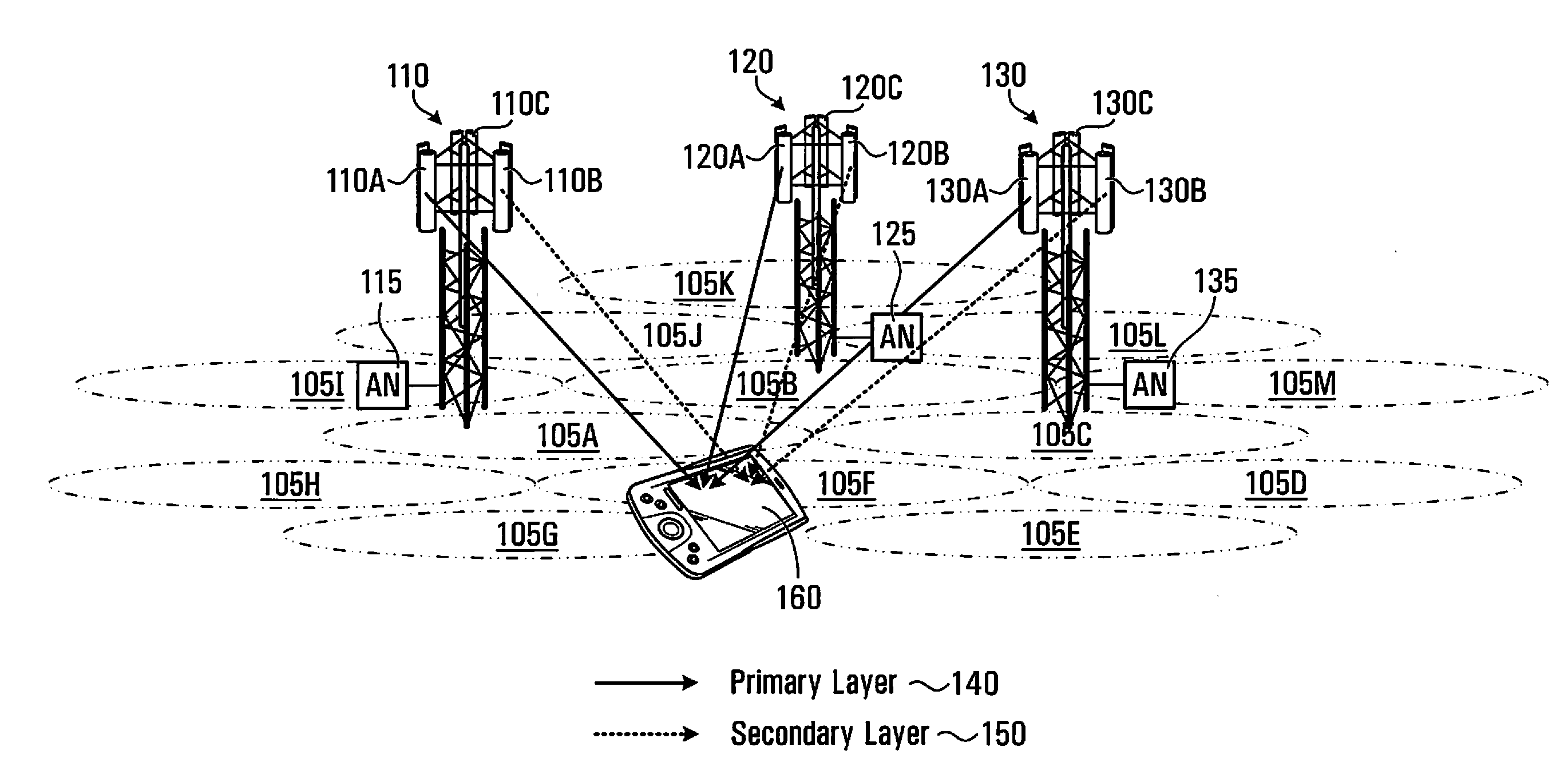System and method for spatial multiplexing-based multiple antenna broadcast/multicast transmission
a multi-antenna and spatial multiplexing technology, applied in the field of multi-antenna transmission and reception with spatial multiplexing, can solve the problem of performance loss of mss near the edge of a given cell
- Summary
- Abstract
- Description
- Claims
- Application Information
AI Technical Summary
Benefits of technology
Problems solved by technology
Method used
Image
Examples
Embodiment Construction
[0072]In a single frequency network (SFN) OFDM network, a common frequency resource in the form of a common set of OFDM subcarriers are in use by multiple transmitters throughout a network. It is noted that an SFN as described herein may be implemented in a context where other frequency resources are also used. For example, one OFDM band of sub-carriers could be used to implement an SFN, and another frequency band used to implement a frequency re-use scheme. However, that does not effect the allocation of resources within the common frequency resource that is being used to implement the SFN.
[0073]Spatial multiplexing can further improve coverage at an edge of a telecommunications cell in an SFN. Spatial multiplexing includes transmitting separately encoded signals on each of a number of different antennas, for example, one antenna for each separately encoded signal. However, in some embodiments, more than one antenna may be used for transmitting each separately encoded signal. A two...
PUM
 Login to View More
Login to View More Abstract
Description
Claims
Application Information
 Login to View More
Login to View More - R&D
- Intellectual Property
- Life Sciences
- Materials
- Tech Scout
- Unparalleled Data Quality
- Higher Quality Content
- 60% Fewer Hallucinations
Browse by: Latest US Patents, China's latest patents, Technical Efficacy Thesaurus, Application Domain, Technology Topic, Popular Technical Reports.
© 2025 PatSnap. All rights reserved.Legal|Privacy policy|Modern Slavery Act Transparency Statement|Sitemap|About US| Contact US: help@patsnap.com



